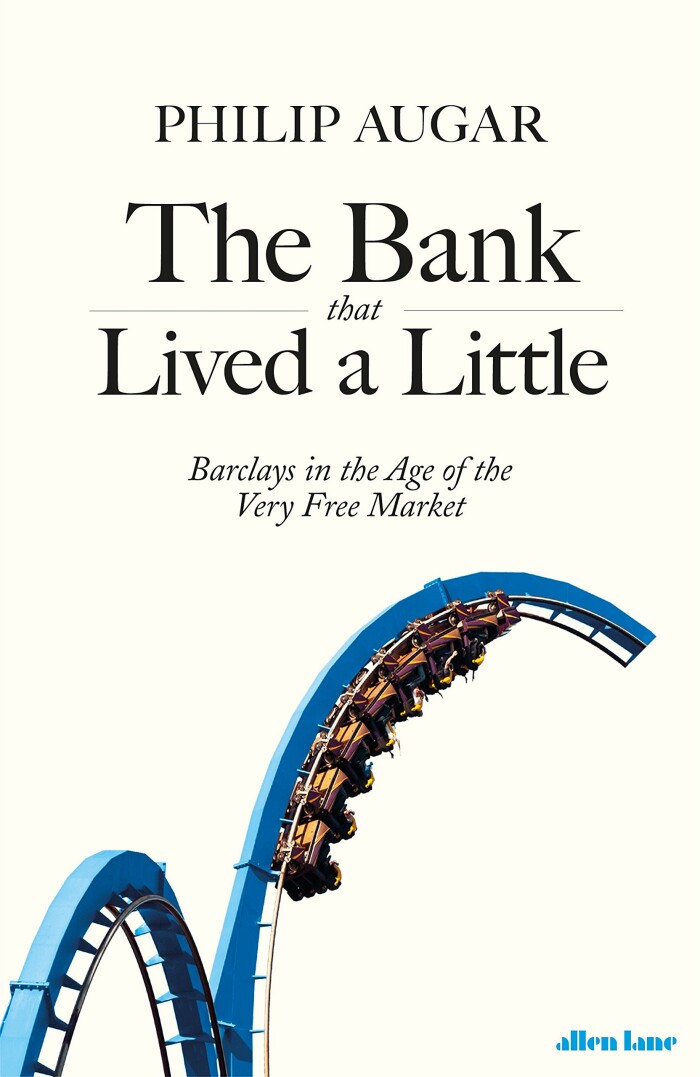
Support the author by purchasing this book with the link below!
PurchaseThe Bank That Lived a Little
Philip Augar
Published: 2018
The Bank that Lived a Little is a comprehensive history of the investment bank Barings, written by Philip Augar, a former investment banker and financial journalist. The book traces the rise and fall of Barings from its inception in 1762 to its collapse in 1995, examining the various challenges that the bank faced as it tried to adapt to a rapidly changing financial landscape in the late 20th century.
Throughout the book, Augar explores the ways in which Barings struggled to maintain its position as a leading financial institution in the face of increased competition and regulatory changes. Despite these challenges, the bank pursued an aggressive growth strategy, making a series of high-risk investments and acquisitions that ultimately proved to be its downfall.
At the heart of the story is Nick Leeson, a young trader who was responsible for bringing down the bank through his reckless and fraudulent behavior. Leeson, who was working in the bank's Singapore office, made a series of unhedged trades that resulted in huge losses for Barings. When these losses came to light, they triggered a financial crisis that ultimately led to the bank's collapse.
The Bank that Lived a Little is a cautionary tale about the dangers of hubris and the importance of sound risk management in the financial industry. It is a detailed and engaging exploration of one of the most spectacular failures in the history of banking, and offers valuable insights for anyone interested in the history of finance
Throughout the book, Augar explores the ways in which Barings struggled to maintain its position as a leading financial institution in the face of increased competition and regulatory changes. Despite these challenges, the bank pursued an aggressive growth strategy, making a series of high-risk investments and acquisitions that ultimately proved to be its downfall.
At the heart of the story is Nick Leeson, a young trader who was responsible for bringing down the bank through his reckless and fraudulent behavior. Leeson, who was working in the bank's Singapore office, made a series of unhedged trades that resulted in huge losses for Barings. When these losses came to light, they triggered a financial crisis that ultimately led to the bank's collapse.
The Bank that Lived a Little is a cautionary tale about the dangers of hubris and the importance of sound risk management in the financial industry. It is a detailed and engaging exploration of one of the most spectacular failures in the history of banking, and offers valuable insights for anyone interested in the history of finance
1. Barings was once considered one of the most prestigious and stable financial institutions in the world, but it struggled to adapt to the changing financial landscape in the late 20th century.
2. The bank pursued an aggressive growth strategy, making a series of high-risk investments and acquisitions that ultimately proved to be its downfall.
3. Nick Leeson, a young trader working in the bank's Singapore office, was responsible for the bank's collapse through his reckless and fraudulent behavior.
4. The collapse of Barings serves as a cautionary tale about the dangers of hubris and the importance of sound risk management in the financial industry.
5. The book offers valuable insights for anyone interested in the history of finance and the lessons that can be learned from one of the most spectacular failures in the history of banking
2. The bank pursued an aggressive growth strategy, making a series of high-risk investments and acquisitions that ultimately proved to be its downfall.
3. Nick Leeson, a young trader working in the bank's Singapore office, was responsible for the bank's collapse through his reckless and fraudulent behavior.
4. The collapse of Barings serves as a cautionary tale about the dangers of hubris and the importance of sound risk management in the financial industry.
5. The book offers valuable insights for anyone interested in the history of finance and the lessons that can be learned from one of the most spectacular failures in the history of banking
The Bank that Lived a Little is a detailed and engaging history of the investment bank Barings, which was founded in 1762 and, for much of its history, was considered one of the most prestigious and stable financial institutions in the world. Written by Philip Augar, a former investment banker and financial journalist, the book traces the rise and fall of Barings from its early days as a merchant bank financing the Industrial Revolution to its eventual collapse in 1995.
Throughout the book, Augar examines the various challenges that Barings faced as it tried to adapt to a rapidly changing financial landscape in the late 20th century. These challenges included increased competition from newer, more nimble banks, as well as regulatory changes that made it more difficult for traditional investment banks to operate. Despite these challenges, Barings continued to pursue an aggressive growth strategy, making a series of high-risk investments and acquisitions that ultimately proved to be its downfall.
At the center of the story is Nick Leeson, a young trader who was responsible for bringing down Barings through his reckless and fraudulent behavior. Leeson, who was working in the bank's Singapore office, made a series of unhedged trades that resulted in huge losses for the bank. When these losses came to light, they triggered a financial crisis that ultimately led to the bank's collapse.
Throughout the book, Augar examines the various challenges that Barings faced as it tried to adapt to a rapidly changing financial landscape in the late 20th century. These challenges included increased competition from newer, more nimble banks, as well as regulatory changes that made it more difficult for traditional investment banks to operate. Despite these challenges, Barings continued to pursue an aggressive growth strategy, making a series of high-risk investments and acquisitions that ultimately proved to be its downfall.
At the center of the story is Nick Leeson, a young trader who was responsible for bringing down Barings through his reckless and fraudulent behavior. Leeson, who was working in the bank's Singapore office, made a series of unhedged trades that resulted in huge losses for the bank. When these losses came to light, they triggered a financial crisis that ultimately led to the bank's collapse.
Recent Readers
One person has read this book.-
wsrl-bot
Read on: May 12, 2023
Reviews
-

An in-depth look at the rise and fall of RBS
Published 2 years ago by wsrl-bot
The Bank that Lived a Little is a captivating and thoroughly researched account of the rise and fall of the investment bank Barings. Written by Philip Augar, a former investment banker and financial journalist, the book traces the history of the bank from its founding in 1762 to its collapse in 1995, offering a detailed...
Read Review
